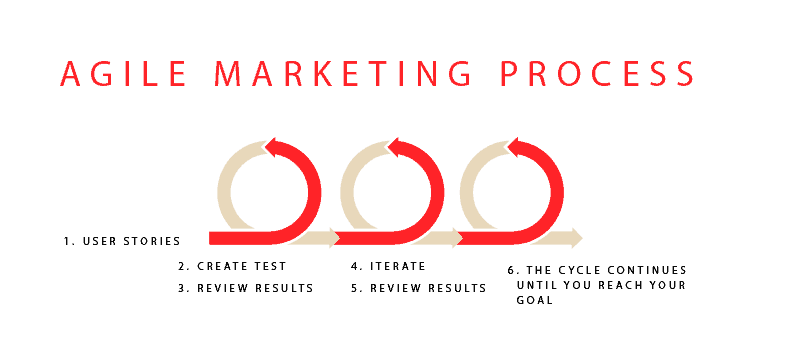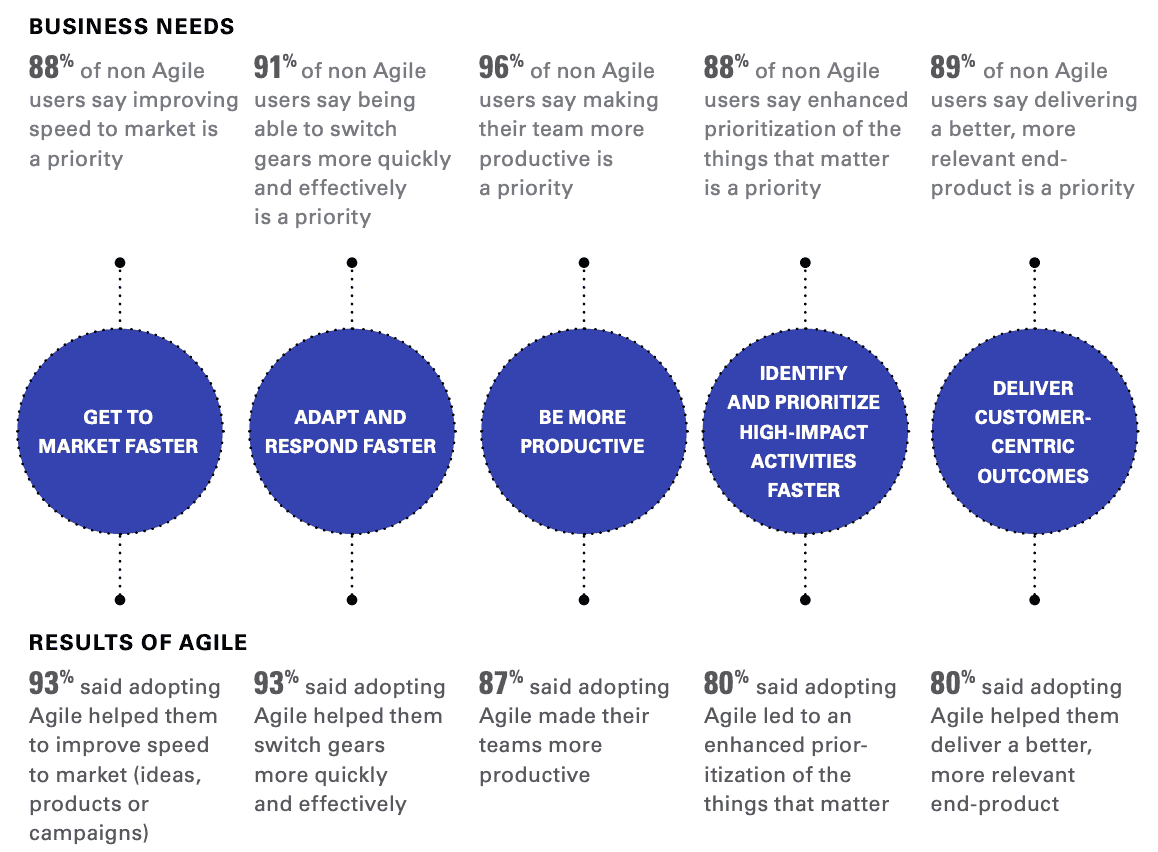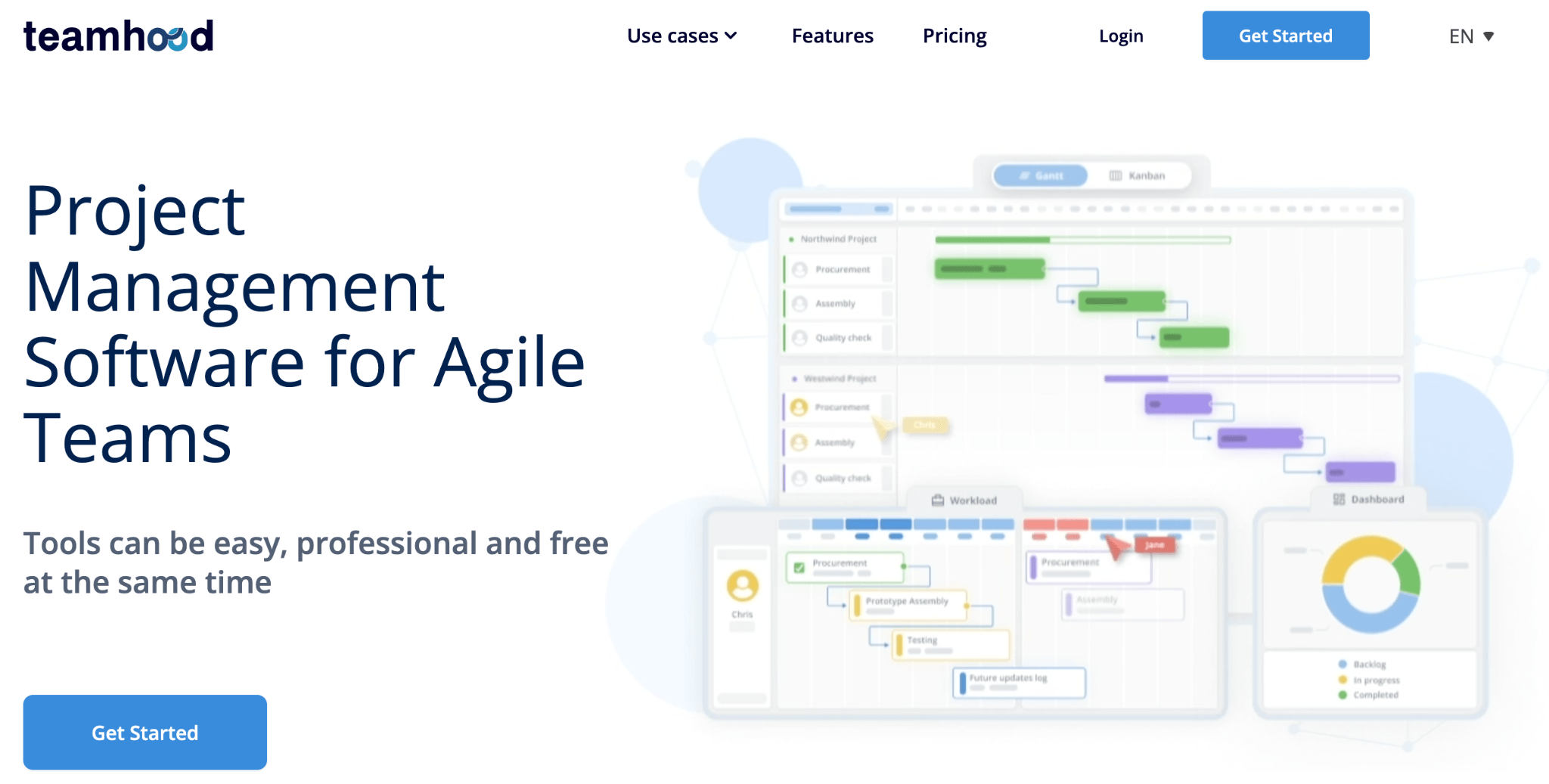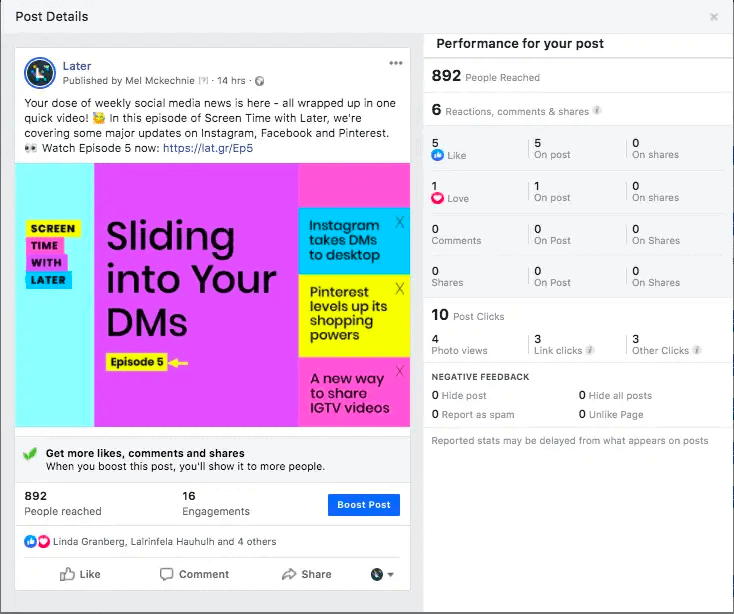With so many businesses competing for followers, audiences, and customers in the same niche, working out a powerful social media marketing strategy that sets you apart from everyone else is essential in 2025.
And for you, this is where the agile method could prove useful. The agile method can help you wear multiple hats, manage your processes efficiently, test your campaigns and stay one step ahead of your competitors.
[playht_player width=”100%” height=”175″ voice=”Mark”]
In this in-depth article, we’ll be taking a complete look at the agile marketing mythology and how it can tie-in with your overall social media marketing strategy.
By the end of the article, you’ll be more familiar with how to be agile on social media, and you’ll be in a position to start brainstorming your own standout campaigns.
What Is The Agile Marketing Method?

Just when it seemed like you’d heard of (and perhaps applied) every social media marketing method there can possibly be, a new one comes along.
Enter the agile method, a marketing strategy that will help you keep up with each social platform and its many quirks, as well as maintain a coordinated strategy and presence on social media and gather feedback and act on it quickly, decisively, and with purpose.
How does it do this?
The agile method has actually been around since 2001, but it’s been mostly confined to helping product managers and programmers fine-tune their work management systems.
However, the core values and principles of agile marketing—ensuring teams prioritize flexibility and launch quickly, while at the same time experimenting and testing everything—can be applied to your social media strategy.
What’s more, there’s no universal, magic bullet in agile marketing. Instead, this method promotes collaboration and encourages individuals to step up with their ideas and collaborate on them.
Teams embrace change, experimentation, and a new and different way of doing things.
In short, teams have agility in the form of snap decision-making that’s driven by verified data. They can take a look at the data, see what isn’t working, and make changes accordingly.
Okay … But How Does Agile Marketing Work?
As we just mentioned, your team will make snap decisions when they embrace agile marketing.
This is key to the success of agile marketing, because it improves the speed at which your team works. Tasks get accomplished faster and more efficiently in shorter spaces of time.
In fact, fundamental to the agile approach is “sprints”.
Sprints are the short amount of time your time has to track/achieve set goals.
How long should a Sprint last?
Typically between one week and four weeks. These are probably shorter check-times than you’re used to, and the idea is that your team stays on track and hits those bigger yearly goals faster—and better.
After a sprint is complete, your team takes a look at your project to see what worked and what didn’t. Was the sprint a success? How does your project look now? What impact has the sprint had on our work?
The idea is that you take a look at your project after each sprint to measure your results. Then, you make improvements that ensure greater results over the next sprint.
A Breakdown of How Agile Marketing Works
In a nutshell, agile marketing lets you work smarter and more efficiently on your social media strategy.
Here is a breakdown of how agile marketing works from start to finish:
- Sprints: Start by determining the length of a sprint. It can be anything from one to four weeks, although some businesses implement six-week sprints.
- Hold meetings: Essential to a successful agile social media marketing strategy are daily meetings. Each day or multiple times a week, your team must check in briefly to discuss what everyone did that day, and what everyone is planning to do tomorrow.
- Analyze data and measure results: Measure your results so that you can make incremental, continuous changes. This will allow you to keep moving forward while generating better results over time
- Kanban project management tool: A kanban project management tool will make it easier for your team to add notes, update everyone on where they’re up to with a task, as well as share documents, and track progress.
As well as all of this, it’s fundamental that everyone works together because agile marketing only works if your team is collaborating and sharing ideas.
Benefits of Using Agile Marketing

By implementing agile marketing in your social media campaigns, you can reap a number of benefits:
Respond Faster
If there’s a change in the market, agile marketing allows you to respond and react faster, like creating posts for current and popular trends that may be old-news next week. In fact, 51% of agile marketing teams can change gears quickly when feedback demands it.
Experimentation
Instead of using the same formula over and over, you can experiment with agile marketing, trying new ideas and repeating the ones that work the best.
Work Together With Different Departments
Agile marketing uses a collaborative approach, bringing the brains of different departments together, and using fresh ideas with unique perspectives.
Back-up Ideas with Verified Data
Because agile marketing relies on hard, verified data, you’re able to easily justify your decisions to your whole team. Instead of relying on guesswork, you’re taking a scientific approach. Indeed, 80% of CMOs said making the switch to Agile helped them deliver a better product that’s more relevant to their end user.
Produce Campaigns Quicker
At the heart of agile marketing is speed—and research has shown that 53% of agile marketing teams can release things faster. By producing faster campaigns, you can test and optimize them, make changes and improvements faster. This allows you to stay ahead of the competition.
Who Does What in an Agile Marketing Team?
As we mentioned earlier, agile marketing started off as a marketing strategy used by product managers. It’s still used by product managers, but you can adapt different roles within your social media marketing team to make agile marketing work for you.
Let’s take a look at the agile marketing team roles you need to consider:
Development Team
Because an agile marketing campaign begins with determining a sprint, you’ll need to put together a development team that produces it.
This team is the brains behind your strategy, ensuring you implement and execute sprints that work.
If you’ve only got a small team at the moment, that’s fine—a marketer who’s good at wearing multiple hats could fit this role. However, don’t forget you can explore funding options to help you scale-up and hire a bigger team.
Product Owner
A director, CEO or marketing manager is typically the one who takes on the role of product owner. They know your business goals inside out, and may have already worked extensively on your social media campaigns depending on the size of the company.
Scrum Master
A scrum master is essentially your coach who takes a look at your sprints and spots any issues that have appeared.
For example, it might be the case that you need a tool, or it might be the case that you’ve got a remote team who are operating on different schedules. The scrum master spots this and finds ways of making things work.
How to Get Started With an Agile Marketing Campaign
Now that you understand what agile marketing is, how it ties in with your social media marketing strategy, as well as which roles you need to fill, this final section will take a look at how you can get started.
Set Marketing Objectives
So that your whole team understands what needs to be done, as well as what direction they’ll be working in, it’s essential that you begin by setting clear marketing objectives.
For instance, an objective might be to attract more leads to your website, or it might be to boost sales through social media posts. Whatever it is, clarify them and make sure everyone is on the same page and knows what needs to be done.
As well as ensuring a campaign is successful, this will also improve collaboration. Once everyone understands the objective, they can all throw their own ideas into the ring.
Break Each Task Down Into Smaller Ones
Agile marketing is just like any other form of marketing in that it requires work—lots of work.
As such, it’s a smart idea to get smart about the way you work. This means breaking tasks down into smaller ones so that they’re more manageable.
For instance, let’s say you want to raise awareness of your business on multiple social platforms. To improve efficiency and swerve burnout, you might want to assign different team members to different platforms (if your resources allow).
Team member A can focus on Facebook, team member b can focus on Instagram, and so on.
Delegate, Delegate, Delegate
The old saying goes that we need to delegate, delegate, delegate—but delegate wisely.
Take a look at each task, and then take a look at your team members. Who’s got the skills required to complete a specific task?
An agile marketing team is just like any other team in that they must be able to see that they’re the ones who can do a specific task. They’ve got the right skills for it, and pairing the right team member up with the right task is the easiest way to boost productivity.
To help you better delegate tasks, you need to understand your team and their individual strengths. Don’t make the mistake of, for example, assigning a copywriter the twin role of editor because you think they can do it.
Once you start delegating properly, you will have an all-star agile team on your hands.
Work With Tools
We’ve already mentioned the advantage of using a kanban project management tool, and it’s true that there are tools that are designed to help a lot with agile marketing.

As well as working with a product management monday tool, you should also seek out the best communication platforms that work well for your team, as well as time management tools that help everyone stay on track.
Whichever tools you use, you need to double down on an effective onboarding process so that everyone understands how a tool works and is comfortable using it. This is one of the basics of project management, yet it can be overlooked.
Track Your Results
At the heart of agile marketing is improving processes. It’s taking a look at what you’ve done in the past few days, reading the hard data, and making slight improvements before repeating the process better than last time.
As such, tracking your results and performing an analysis is essential.
To help you do this, it’s always a good idea to set your KPIs and decide your objectives and metrics beforehand.
Then, ask yourself at the end of each Sprint Cycle how close you are to your objectives. Has your hard work paid off this time? Did you gain X amount of followers or boost your conversions by X percentage on Facebook ads?
To help, make sure to use the right analytics tools. The likes of Facebook and Instagram all come with analytics tools that let you set and track your goals—so that you can see right from the start how your marketing efforts are progressing.

Scale
After a few sprints, your team should know exactly which methods and techniques are working.
You will also have a clearer understanding of the platforms that are paying off (and which ones are perhaps worth discarding).
At this point, then, it’s time to dial things up and scale. Take your working strategies, refine them—and use them regularly.
This might mean adding more of your budget to your agile marketing methods, hiring more team members, producing more social media content, and running more ads.
Once you start to do this, you will see that both productivity and results go up.
Putting The Customer First with Agile Marketing: Final Thoughts
All we’ve discussed so far about the agile marketing method will help you put together a stronger social media marketing strategy that works.
Create campaigns that allow you to connect and engage with your customers on a level they’ll understand. Post native content, run relevant ads that don’t get you unfollowed, offer excellent customer support, and always remember to add value—lots of value.
And when your processes are working? Double down on them. Refine, repeat, rinse.

